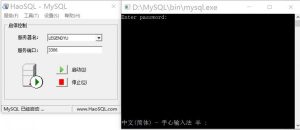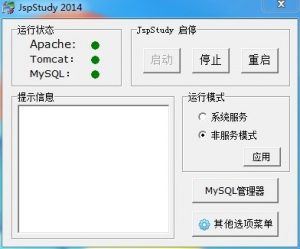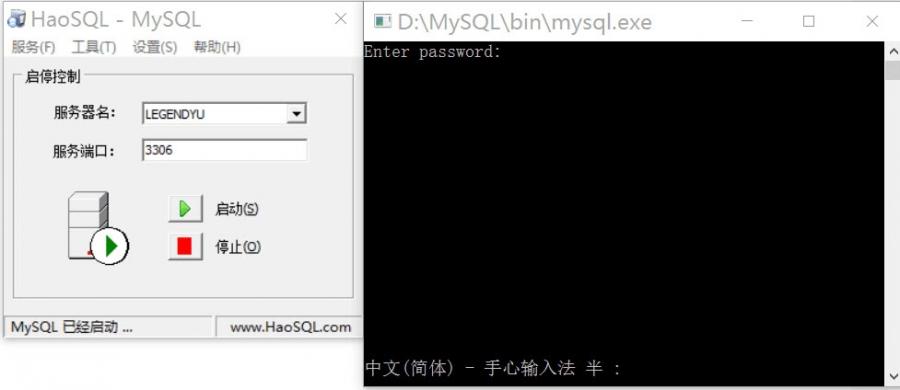php实现的rc4加密解密类。分享给大家供大家参考,具体如下:
class.rc4crypt.php文件:
<?php
/*
* By julying.com
*/
define('CRYPT_RC4_MODE_INTERNAL', 1);
define('CRYPT_RC4_MODE_MCRYPT', 2);
define('CRYPT_RC4_ENCRYPT', 0);
define('CRYPT_RC4_DECRYPT', 1);
class Crypt_RC4 {
/**
* The Key
*
* @see Crypt_RC4::setKey()
* @var String
* @access private
*/
var $key = "\0";
/**
* The Key Stream for encryption
*
* If CRYPT_RC4_MODE == CRYPT_RC4_MODE_MCRYPT, this will be equal to the mcrypt object
*
* @see Crypt_RC4::setKey()
* @var Array
* @access private
*/
var $encryptStream = false;
/**
* The Key Stream for decryption
*
* If CRYPT_RC4_MODE == CRYPT_RC4_MODE_MCRYPT, this will be equal to the mcrypt object
*
* @see Crypt_RC4::setKey()
* @var Array
* @access private
*/
var $decryptStream = false;
/**
* The $i and $j indexes for encryption
*
* @see Crypt_RC4::_crypt()
* @var Integer
* @access private
*/
var $encryptIndex = 0;
/**
* The $i and $j indexes for decryption
*
* @see Crypt_RC4::_crypt()
* @var Integer
* @access private
*/
var $decryptIndex = 0;
/**
* MCrypt parameters
*
* @see Crypt_RC4::setMCrypt()
* @var Array
* @access private
*/
var $mcrypt = array('', '');
/**
* The Encryption Algorithm
*
* Only used if CRYPT_RC4_MODE == CRYPT_RC4_MODE_MCRYPT. Only possible values are MCRYPT_RC4 or MCRYPT_ARCFOUR.
*
* @see Crypt_RC4::Crypt_RC4()
* @var Integer
* @access private
*/
var $mode;
/**
* Default Constructor.
*
* Determines whether or not the mcrypt extension should be used.
*
* @param optional Integer $mode
* @return Crypt_RC4
* @access public
*/
var $continuousBuffer ;
function Crypt_RC4()
{
if ( !defined('CRYPT_RC4_MODE') ) {
switch (true) {
case extension_loaded('mcrypt') && (defined('MCRYPT_ARCFOUR') || defined('MCRYPT_RC4')):
// i'd check to see if rc4 was supported, by doing in_array('arcfour', mcrypt_list_algorithms('')),
// but since that can be changed after the object has been created, there doesn't seem to be
// a lot of point...
define('CRYPT_RC4_MODE', CRYPT_RC4_MODE_MCRYPT);
break;
default:
define('CRYPT_RC4_MODE', CRYPT_RC4_MODE_INTERNAL);
}
}
switch ( CRYPT_RC4_MODE ) {
case CRYPT_RC4_MODE_MCRYPT:
switch (true) {
case defined('MCRYPT_ARCFOUR'):
$this->mode = MCRYPT_ARCFOUR;
break;
case defined('MCRYPT_RC4');
$this->mode = MCRYPT_RC4;
}
}
}
/**
* Sets the key.
*
* Keys can be between 1 and 256 bytes long. If they are longer then 256 bytes, the first 256 bytes will
* be used. If no key is explicitly set, it'll be assumed to be a single null byte.
*
* @access public
* @param String $key
*/
function setKey($key)
{
$this->key = $key;
if ( CRYPT_RC4_MODE == CRYPT_RC4_MODE_MCRYPT ) {
return;
}
$keyLength = strlen($key);
$keyStream = array();
for ($i = 0; $i < 256; $i++) {
$keyStream[$i] = $i;
}
$j = 0;
for ($i = 0; $i < 256; $i++) {
$j = ($j + $keyStream[$i] + ord($key[$i % $keyLength])) & 255;
$temp = $keyStream[$i];
$keyStream[$i] = $keyStream[$j];
$keyStream[$j] = $temp;
}
$this->encryptIndex = $this->decryptIndex = array(0, 0);
$this->encryptStream = $this->decryptStream = $keyStream;
}
/**
* Dummy function.
*
* Some protocols, such as WEP, prepend an "initialization vector" to the key, effectively creating a new key [1].
* If you need to use an initialization vector in this manner, feel free to prepend it to the key, yourself, before
* calling setKey().
*
* [1] WEP's initialization vectors (IV's) are used in a somewhat insecure way. Since, in that protocol,
* the IV's are relatively easy to predict, an attack described by
* {@link http://www.drizzle.com/~aboba/IEEE/rc4_ksaproc.pdf Scott Fluhrer, Itsik Mantin, and Adi Shamir}
* can be used to quickly guess at the rest of the key. The following links elaborate:
*
* {@link http://www.rsa.com/rsalabs/node.asp?id=2009 http://www.rsa.com/rsalabs/node.asp?id=2009}
* {@link http://en.wikipedia.org/wiki/Related_key_attack http://en.wikipedia.org/wiki/Related_key_attack}
*
* @param String $iv
* @see Crypt_RC4::setKey()
* @access public
*/
function setIV($iv)
{
}
/**
* Sets MCrypt parameters. (optional)
*
* If MCrypt is being used, empty strings will be used, unless otherwise specified.
*
* @link http://php.net/function.mcrypt-module-open#function.mcrypt-module-open
* @access public
* @param optional Integer $algorithm_directory
* @param optional Integer $mode_directory
*/
function setMCrypt($algorithm_directory = '', $mode_directory = '')
{
if ( CRYPT_RC4_MODE == CRYPT_RC4_MODE_MCRYPT ) {
$this->mcrypt = array($algorithm_directory, $mode_directory);
$this->_closeMCrypt();
}
}
/**
* Encrypts a message.
*
* @see Crypt_RC4::_crypt()
* @access public
* @param String $plaintext
*/
function encrypt($plaintext)
{
return self::toHex($this->_crypt($plaintext, CRYPT_RC4_ENCRYPT));
}
/**
* Decrypts a message.
*
* $this->decrypt($this->encrypt($plaintext)) == $this->encrypt($this->encrypt($plaintext)).
* Atleast if the continuous buffer is disabled.
*
* @see Crypt_RC4::_crypt()
* @access public
* @param String $ciphertext
*/
function decrypt($ciphertext)
{
$ciphertext = self::fromHex($ciphertext);
return $this->_crypt($ciphertext, CRYPT_RC4_DECRYPT);
}
/**
* Encrypts or decrypts a message.
*
* @see Crypt_RC4::encrypt()
* @see Crypt_RC4::decrypt()
* @access private
* @param String $text
* @param Integer $mode
*/
function _crypt($text, $mode)
{
if ( CRYPT_RC4_MODE == CRYPT_RC4_MODE_MCRYPT ) {
$keyStream = $mode == CRYPT_RC4_ENCRYPT ? 'encryptStream' : 'decryptStream';
if ($this->$keyStream === false) {
$this->$keyStream = mcrypt_module_open($this->mode, $this->mcrypt[0], MCRYPT_MODE_STREAM, $this->mcrypt[1]);
mcrypt_generic_init($this->$keyStream, $this->key, '');
} else if (!$this->continuousBuffer) {
mcrypt_generic_init($this->$keyStream, $this->key, '');
}
$newText = mcrypt_generic($this->$keyStream, $text);
if (!$this->continuousBuffer) {
mcrypt_generic_deinit($this->$keyStream);
}
return $newText;
}
if ($this->encryptStream === false) {
$this->setKey($this->key);
}
switch ($mode) {
case CRYPT_RC4_ENCRYPT:
$keyStream = $this->encryptStream;
list($i, $j) = $this->encryptIndex;
break;
case CRYPT_RC4_DECRYPT:
$keyStream = $this->decryptStream;
list($i, $j) = $this->decryptIndex;
}
$newText = '';
for ($k = 0; $k < strlen($text); $k++) {
$i = ($i + 1) & 255;
$j = ($j + $keyStream[$i]) & 255;
$temp = $keyStream[$i];
$keyStream[$i] = $keyStream[$j];
$keyStream[$j] = $temp;
$temp = $keyStream[($keyStream[$i] + $keyStream[$j]) & 255];
$newText.= chr(ord($text[$k]) ^ $temp);
}
if ($this->continuousBuffer) {
switch ($mode) {
case CRYPT_RC4_ENCRYPT:
$this->encryptStream = $keyStream;
$this->encryptIndex = array($i, $j);
break;
case CRYPT_RC4_DECRYPT:
$this->decryptStream = $keyStream;
$this->decryptIndex = array($i, $j);
}
}
return $newText;
}
/**
* Treat consecutive "packets" as if they are a continuous buffer.
*
* Say you have a 16-byte plaintext $plaintext. Using the default behavior, the two following code snippets
* will yield different outputs:
*
* <code>
* echo $rc4->encrypt(substr($plaintext, 0, 8));
* echo $rc4->encrypt(substr($plaintext, 8, 8));
* </code>
* <code>
* echo $rc4->encrypt($plaintext);
* </code>
*
* The solution is to enable the continuous buffer. Although this will resolve the above discrepancy, it creates
* another, as demonstrated with the following:
*
* <code>
* $rc4->encrypt(substr($plaintext, 0, 8));
* echo $rc4->decrypt($des->encrypt(substr($plaintext, 8, 8)));
* </code>
* <code>
* echo $rc4->decrypt($des->encrypt(substr($plaintext, 8, 8)));
* </code>
*
* With the continuous buffer disabled, these would yield the same output. With it enabled, they yield different
* outputs. The reason is due to the fact that the initialization vector's change after every encryption /
* decryption round when the continuous buffer is enabled. When it's disabled, they remain constant.
*
* Put another way, when the continuous buffer is enabled, the state of the Crypt_DES() object changes after each
* encryption / decryption round, whereas otherwise, it'd remain constant. For this reason, it's recommended that
* continuous buffers not be used. They do offer better security and are, in fact, sometimes required (SSH uses them),
* however, they are also less intuitive and more likely to cause you problems.
*
* @see Crypt_RC4::disableContinuousBuffer()
* @access public
*/
function enableContinuousBuffer()
{
$this->continuousBuffer = true;
}
/**
* Treat consecutive packets as if they are a discontinuous buffer.
*
* The default behavior.
*
* @see Crypt_RC4::enableContinuousBuffer()
* @access public
*/
function disableContinuousBuffer()
{
if ( CRYPT_RC4_MODE == CRYPT_RC4_MODE_INTERNAL ) {
$this->encryptIndex = $this->decryptIndex = array(0, 0);
$this->setKey($this->key);
}
$this->continuousBuffer = false;
}
/**
* Dummy function.
*
* Since RC4 is a stream cipher and not a block cipher, no padding is necessary. The only reason this function is
* included is so that you can switch between a block cipher and a stream cipher transparently.
*
* @see Crypt_RC4::disablePadding()
* @access public
*/
function enablePadding()
{
}
/**
* Dummy function.
*
* @see Crypt_RC4::enablePadding()
* @access public
*/
function disablePadding()
{
}
/**
* Class destructor.
*
* Will be called, automatically, if you're using PHP5. If you're using PHP4, call it yourself. Only really
* needs to be called if mcrypt is being used.
*
* @access public
*/
function __destruct()
{
if ( CRYPT_RC4_MODE == CRYPT_RC4_MODE_MCRYPT ) {
$this->_closeMCrypt();
}
}
/**
* Properly close the MCrypt objects.
*
* @access prviate
*/
function _closeMCrypt()
{
if ( $this->encryptStream !== false ) {
if ( $this->continuousBuffer ) {
mcrypt_generic_deinit($this->encryptStream);
}
mcrypt_module_close($this->encryptStream);
$this->encryptStream = false;
}
if ( $this->decryptStream !== false ) {
if ( $this->continuousBuffer ) {
mcrypt_generic_deinit($this->decryptStream);
}
mcrypt_module_close($this->decryptStream);
$this->decryptStream = false;
}
}
// @function fromHex 把十六进制数转换成字符串
function toHex($sa , $len = 0){
$buf = "";
if( $len == 0 )
$len = strlen($sa) ;
for ($i = 0; $i < $len; $i++)
{
$val = dechex(ord($sa{$i}));
if(strlen($val)< 2)
$val = "0".$val;
$buf .= $val;
}
return $buf;
}
// @function fromHex 把十六进制数转换成字符串
function fromHex($sa){
$buf = "";
$len = strlen($sa) ;
for($i = 0; $i < $len; $i += 2){
$val = chr(hexdec(substr($sa, $i, 2)));
$buf .= $val;
}
return $buf;
}
}
使用方法:
include('class.rc4crypt.php');
$rc4 = new Crypt_RC4();
$rc4 -> setKey('21sd54a1w5q');
$text = 'www.zzaxw.com';
echo $x = $rc4->encrypt($text);//加密
echo '<br />';
echo $rc4->decrypt( $x) ;//解密
运行结果:
7907bb7c6694f179e9642ebd
www.zzaxw.com
提示:运行结果仅作展示,还请以代码运行最终结果为准!
© 版权声明
本文刊载的所有内容,包括文字、图片、音频、视频、软件、程序、以及网页版式设计等部门来源于互联网,版权均归原作者所有!本网站提供的内容服务于个人学习、研究或欣赏,以及其他非商业性或非盈利性用途,但同时应遵守著作权法及其他相关法律的规定,不得侵犯本网站及相关权利人的合法权利。
联系信息:邮箱aoxolcom@163.com或见网站底部。
联系信息:邮箱aoxolcom@163.com或见网站底部。
THE END


















请登录后发表评论
注册
社交帐号登录